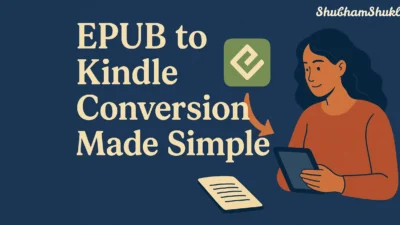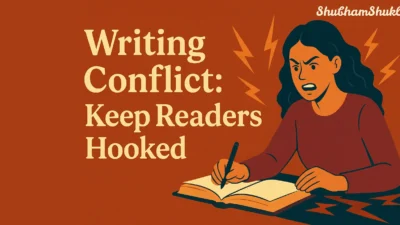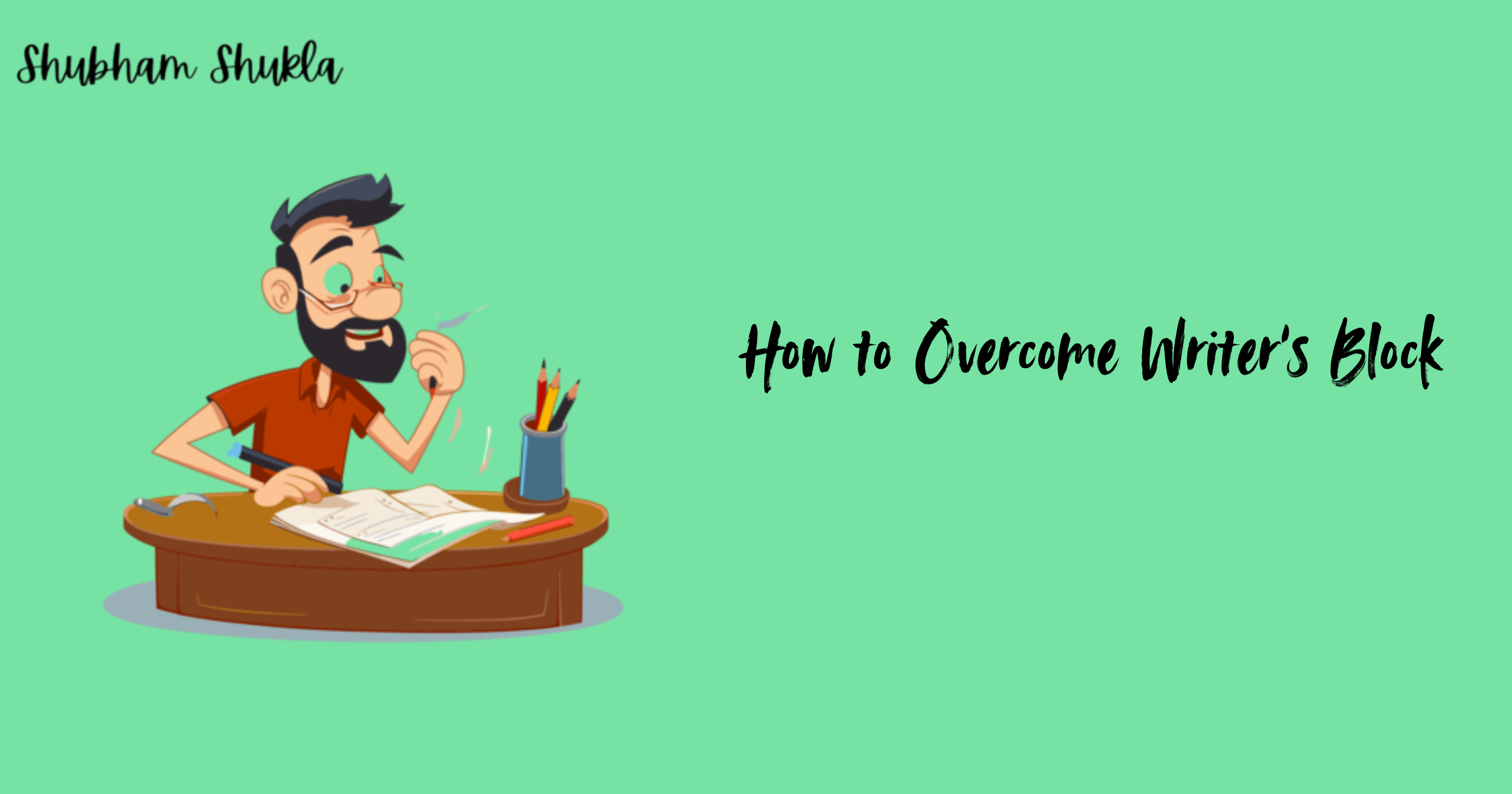- Why Authors Are Turning to AI Tools for Fiction Writing
- Top Picks: Best AI Writing Tools for Authors in 2025
- Best AI Writing Software for Nonfiction & Blogging
- How to Pick the Right AI Tool for Your Writing
- Common Mistakes When Using AI Writing Tools
- Tips to Supercharge Your Writing with AI
- Example in Action
- Final Thoughts: The Best AI Writing Tools for Authors Can Be Game-Changers
- Frequently asked questions
Writing a novel sometimes feels like wandering through a dense forest without a map. That’s why AI writing assistants are gaining traction—especially among novelists who need fresh ideas, structural clarity, or just a gentle kickstart.
If you’re curious about unlocking your creative spark or simplifying your process, here’s a guide to the best AI writing tools for authors, with examples and real writer insights to help you decide.
You may also like: How to Write Rising Action That Grabs Your Reader and Won’t Let Go
Why Authors Are Turning to AI Tools for Fiction Writing
The appeal is simple: these tools offer a surprising mix of structure and spontaneity. Facing plot confusion? Need character arcs sketched out? Want help drafting dialogue that doesn’t feel wooden? AI writing tools can step in.
Take Sudowrite, for instance. It’s a favorite among novelists for brainstorming metaphors, expanding scenes, or smoothing out prose. One author shared how Sudowrite helped rewrite a critical emotional flashback in their fantasy novel—and the resulting scene made their beta readers cry.
That’s just one example, and it shows how AI writing assistants can move beyond tech and support real emotional storytelling.
Top Picks: Best AI Writing Tools for Authors in 2025
Here’s a closer look at my top choices—and why they matter if you’re a fiction writer:
Novelcrafter
Built for long-form creative work, Novelcrafter shines at plotting and managing character threads. You don’t just feed it prompts—you craft a roadmap. If you’ve ever felt overwhelmed by multiple POVs or tangled storylines, this might just be your new best friend.
Sudowrite
Exceptional for dialogue, description, and ideas. Need a stronger opening sentence or a character reaction that feels genuine? Try Sudowrite. I used it during NaNoWriMo once to expand a three-sentence scene—what came out was three rich paragraphs that anchored the emotional stakes.
Raptor Write
A free option that’s surprisingly sturdy. While it’s not as feature-packed as Novelcrafter or Sudowrite, Raptor Write offers a gentle introduction to AI tools for fiction writing.
It’s perfect if you’re curious but wary of subscription fees.These three tools offer a balance: structure (Novelcrafter), prose enhancement (Sudowrite), and low-risk experimentation (Raptor Write). They all deserve a spot among the best AI writing tools for authors.
You may also like: The Secret Power of Slow Burn Pacing in Storytelling
Best AI Writing Software for Nonfiction & Blogging
If you also write nonfiction—say, book reviews or reading guides—here are tools recommended for those formats:
- ChatGPT Plus or Claude Pro: Excellent for drafting blog posts, refining tone, or rewriting sections for clarity. I often use ChatGPT to brainstorm blog angles on book marketing or reading order topics.
- WriteSonic, Frase, or Copy.ai: These lean into SEO-friendly writing and content outlines—perfect when writing a goal-focused article like “Complete reading order for the Mistborn series” or “Amazon keywords for indie authors.”
While these tools aren’t designed for novels, they shine when your writing needs to be structured, SEO-conscious, or time-efficient.
How to Pick the Right AI Tool for Your Writing
Choosing the right tool depends on what you do most:
- Mainly write novels or genres? Go for Sudowrite or Novelcrafter.
- Do you write guides or review posts alongside fiction? Add ChatGPT Plus, Frase, or Copy.ai to your toolbox.
- Want to test the waters first? Try Raptor Write or free tiers before committing.
Think of it like pairing wine with food—one tool can bring out the best in your process, but mixing a few is often tastier.
You may also like: Is the Antagonist the Bad Guy? Let’s Talk About It
Common Mistakes When Using AI Writing Tools
- Trusting AI too much: These tools can produce errors or generic prose. They don’t replace your voice or strategic editing.
- Overusing generated text: Heavy lifting is fine, but your craft still needs to shine through.
- Losing flexibility: Some writers lock themselves into one tool or writing flow. You’re strongest when you stay adaptable.
In my own experience, I found that relying too heavily on AI output squeezed my authenticity—and slowed my progress. Turning the AI text into drafts or sketches, then rewriting them fully in my own style, felt more rewarding and preserved originality.
Tips to Supercharge Your Writing with AI
- Use smart prompts: Instead of “Write a scene,” try “Write a tense scene where character A confronts character B about a betrayal in rainy weather.”
- Break tasks into phases: Start with a scene outline, review with AI help, refine the prose, then humanize it.
- Combine tools: Use Novelcrafter for structure, Sudowrite to beautify the prose, and ChatGPT to generate email newsletters or blog posts around your writing.
- Always iterate: Never post or submit AI-generated text without your own revision and emotional imprint.
You may also like: Linear vs Nonlinear Storytelling Examples: Which Style Tells the Stronger Story?
Example in Action
Imagine you’re writing a fantasy novel set in a fog-shrouded city. You’re stuck on how the protagonist’s internal conflict ties to a looming storm.
- You open Novelcrafter to map out the storm as a metaphor for emotional upheaval.
- You draft the tension with Sudowrite, creating vivid weather imagery and internal monologue.
- Later, you need a blog post summarizing the series for readers—ChatGPT Plus helps polish the copy and check grammar.
That combination made one of my favorite characters’ arcs feel rooted, weathered, and meaningful—while keeping my productivity high.
Final Thoughts: The Best AI Writing Tools for Authors Can Be Game-Changers
AI writing tools are not magic—but they’re powerful collaborators. When you use them as partners—not shortcuts—they can help you draft faster, overcome writer’s block, and keep your creative flow alive.
The best AI writing tools for authors are not about replacing the writer—they’re about supercharging your voice, helping you focus on emotional truth while they handle structure, brainstorming, or polish.
Try a free trial. See which tools spark joy, not frustration. And always keep your own voice in the driver’s seat.
Frequently asked questions
Are these tools good for novel-length writing?
Yes. Novelcrafter and Sudowrite are built for long manuscripts, while ChatGPT can support drafting and polishing.
Will my story feel robotic if I use AI tools?
Only if you skip your own editing. Use AI for structure or ideas, but always revise for emotional tone.
Can AI tools help with character arcs or dialogue?
Definitely. Sudowrite offers focused prompts for character drama and internal conflicts.
Are there free AI tools to try?
Yes—Raptor Write and the free tiers of ChatGPT and others help you explore before investing.



